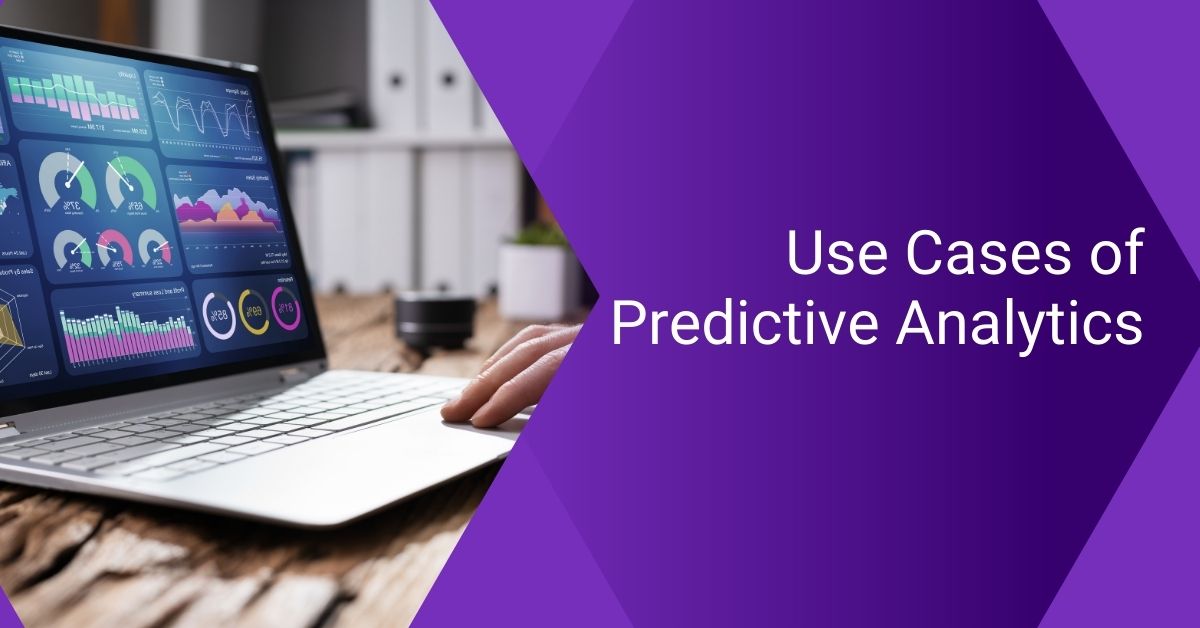
7 Real-world Use Cases of Predictive Analytics
Predicting the future gives businesses a competitive advantage. Artificial Intelligence brings in predictive analytics – which takes predictions one step further. Predictive analytics, often known as advanced analytics, uses Machine Learning and business intelligence to determine future outcomes.
Most predictive analytics models use past data and include variables. The historical data is key in identifying patterns and trends in predictive analytics projects. Today, businesses need predictions to build better products, identify ways to serve the market, and cut down operational costs.
Companies like Amazon and Netflix use the predictive analytics marketing strategy to target customers and deliver a better user experience. Amazon uses past purchases and browsing history to recommend products to users.
On the other hand, Netflix uses predictive analytics models in its recommendation engine to predict user behavior and suggest TV shows and movies. It has a powerful engine that can predict accurate preferences based on the user’s past watching habits.
This article will highlight 7 real-world use cases of predictive analytics in business and industry. Today, nearly every industry has predictive analytics uses that are found in day-to-day operations. We’ll start by introducing what is predictive analytics before moving on to the use cases.
What is Predictive Analytics?
Predictive analytics utilizes historical data to predict future trends and patterns. Predictive analytics uses that data and identifies correlations between variables. It helps to foresee future values of certain variables, enabling businesses to reduce risk and costs.
For example, a company can use output and revenue to determine the revenue for the coming months and determine their profitability. The model will focus on two variables, one of which will be dependent while the other will be independent.
There are various predictive analytics models – classification model, clustering, forecast, time series, etc. All of them predict future values based on historical data arranged in multiple different ways.
Let’s look at the applications and the real-world uses of predictive models.
7 Real-world Use Cases of Predictive Analytics
Today, businesses regularly use predictive analytics to target customers and achieve better operational results. There are countless examples of predictive analytics in marketing, manufacturing, real estate, software testing, healthcare, and many more.
Predictive analytics models are integrated within applications and systems to identify future results. Here are 7 real-world real use cases of predictive analytics projects:
- Predicting buying behavior
- One of the biggest uses of predictive analytics is predicting buying behavior in the retail industry. Companies use the tools to learn all about their customers. Companies use advanced analytics to identify buying habits based on previous purchase history.
- Walmart is a great example. It used early data to understand buying behavior in certain circumstances. Small ecommerce retailers can incorporate predictive analytics in PoS to predict customer purchase patterns. It helps to understand customers on a deeper, more personalized level.
- Fraud detection
- As cybersecurity becomes a growing concern, predictive analytics examples are plenty. The most important one is fraud detection. These models can identify anomalies in the system and detect unusual behavior to determine threats.
- For example, experts can feed historical data of cyberattacks and threats to the system. When the predictive analytics algorithm identifies something similar, it will send a notification to the respective personnel. It will limit the entry of hackers and vulnerabilities that might put the system at risk.
- Healthcare diagnosis
- The healthcare industry is benefitting the most from the predictive analysis module. Health data is critical to understand the history and current illness of any patient. Predictive analytics models help in understanding the disease by providing an accurate diagnosis based on past data.
- With the help of certain health factors, predictive analytics help doctors reach the root cause of diseases. It gives them timely analytics so that they can start working on the treatments at an early stage. With the help of predictive analytics models, the spread of negative health effects can be stopped.
- Card abandonment
- Retailers love this application of predictive analytics. Cart abandonment is a big issue. However, based on past history, models can predict how likely a customer is to abandon the cart.
- For example, by feeding the data to the model of purchase made and cart abandoned, the model predicts how many customers will abandon it. It will also provide companies with details about each customer about whether they will purchase or abandon the cart based on the previous visits to the store.
- Content recommendation
- One of the most relatable and visible predictive analytics examples is content recommendation. Through algorithms and models, entertainment companies can predict what users want to watch based on their history.
- When you ask, “what companies use predictive analytics?” The most relevant answer is Netflix. The entertainment company utilizes predictive algorithms to recommend content to users based on genre, keywords, ratings, and more. The intelligent system uses highly advanced analytics for predicting the user’s behavior.
- Equipment maintenance
- Predictive analytics models are significant for manufacturing, healthcare, and other businesses that require scheduled equipment maintenance. An accidental equipment breakdown can risk human lives and lead to major losses for the company as well.
- For example, by integrating IoT with equipment, manufacturing units can feed data to understand when the equipment would require maintenance. In this way, the machinery would alert the personnel and the maintenance can be done to avoid unscheduled and accidental breakdowns.
- Virtual assistants
- Combined with the power of deep learning, predictive analytics works wonders when utilized with virtual assistants. Siri, Ok Google, and Alexa are real-world use cases of predictive analytics projects. These virtual assistants learn from the user’s behavior and then deliver accurate results.
- Companies also use virtual assistants that act as chatbots. It improves the customer experience as these bots learn from interactions and predict what the customer’s response would be. They are self-learning and enable companies to better manage customers without hiring a lot of support staff.
Read more: Top 11 RPA Use Cases in Different Industries
In a nutshell
The predictive analytics marketing strategy is bringing a revolution in how companies use to operate. It is using historical data to predict trends and behavior that enable companies to build better products and provide excellent services.
We saw that limitless industries use predictive analytics, including finance, healthcare, retail, manufacturing, and many more. They reap significant benefits by identifying future values, customer behavior, and maintenance schedules to enhance their profitability.
BoTree Technologies is a leading Machine Learning development company, building predictive analytics models to help businesses generate more revenue.
Contact us today for a FREE CONSULTATION.




